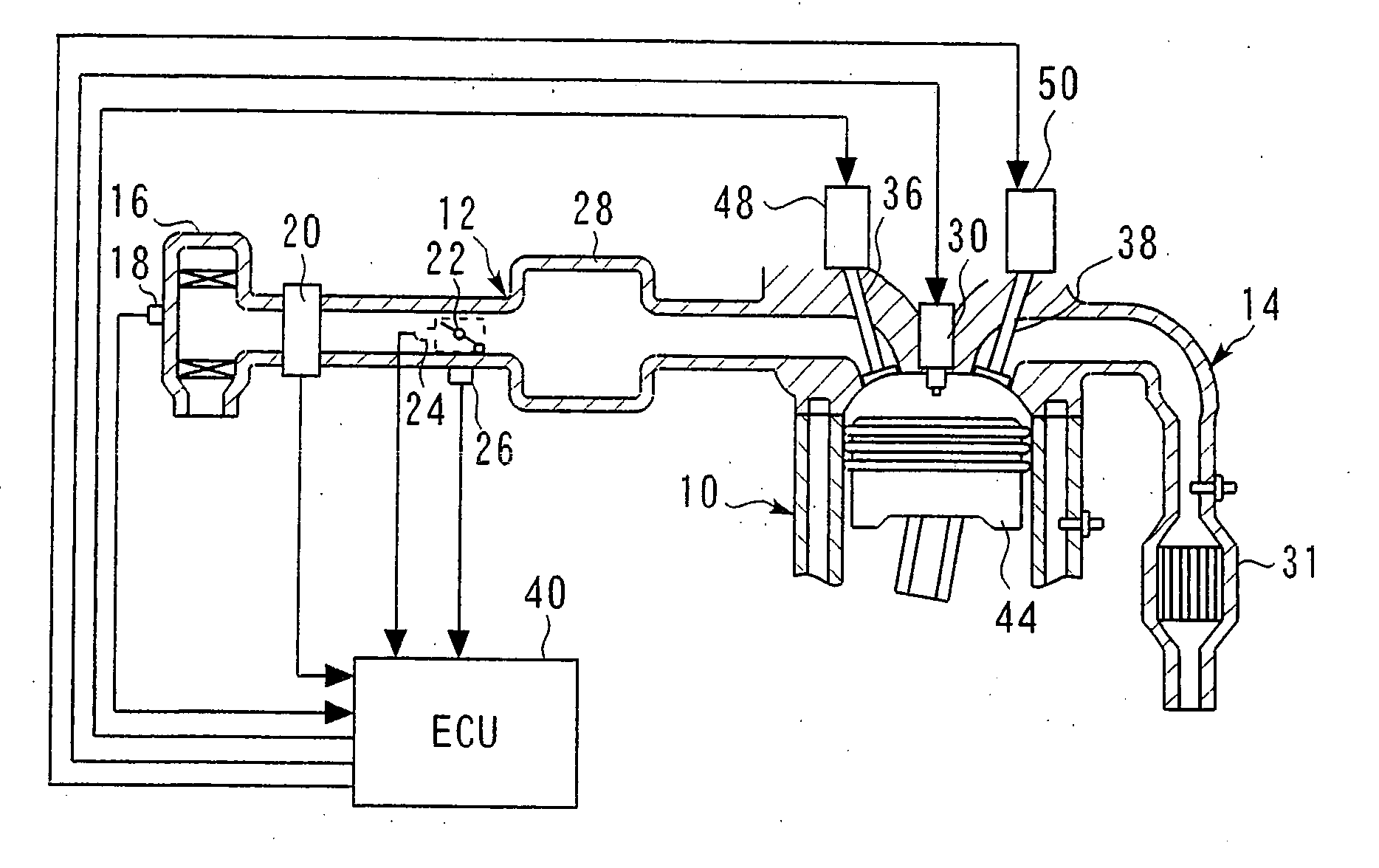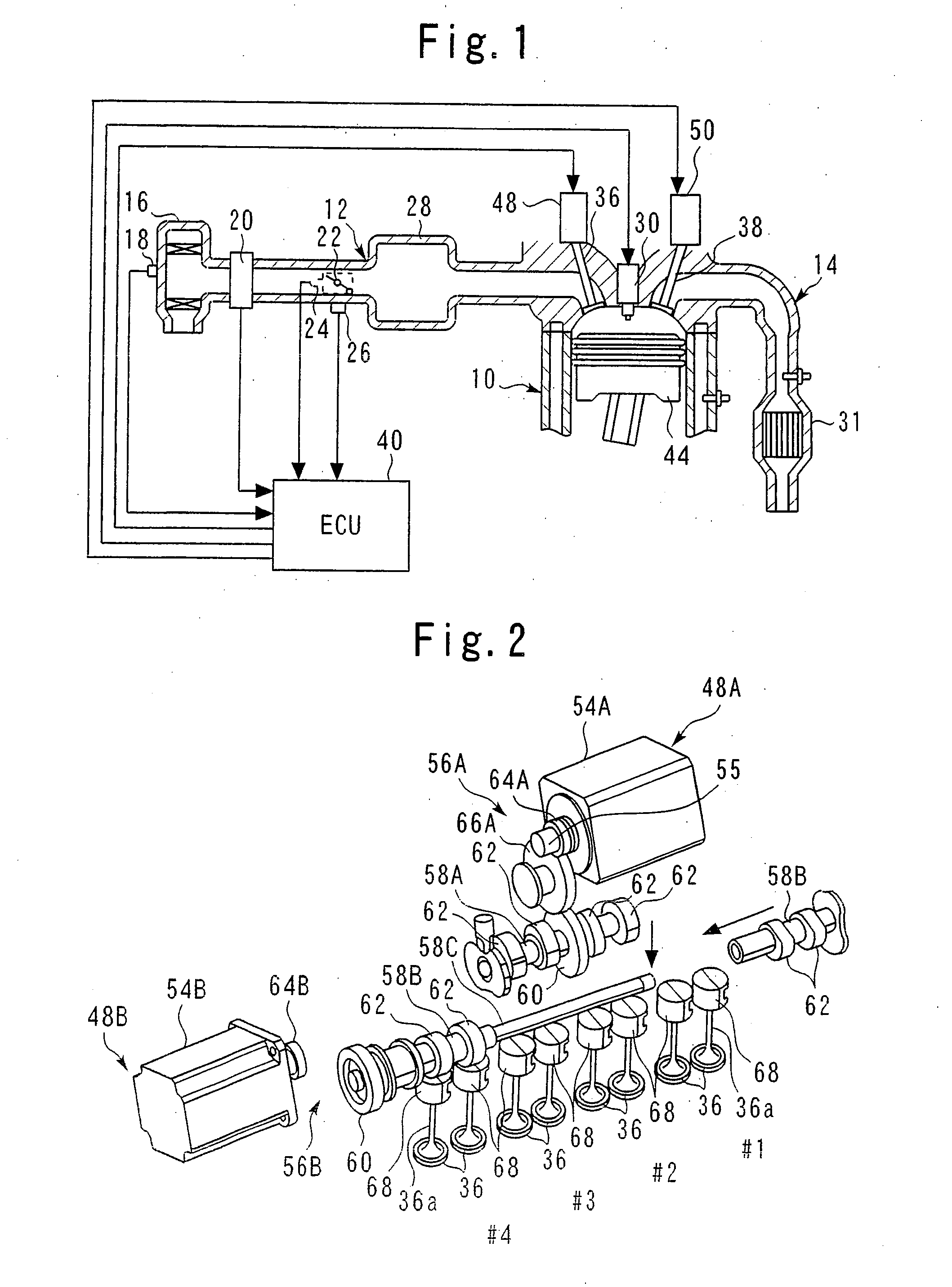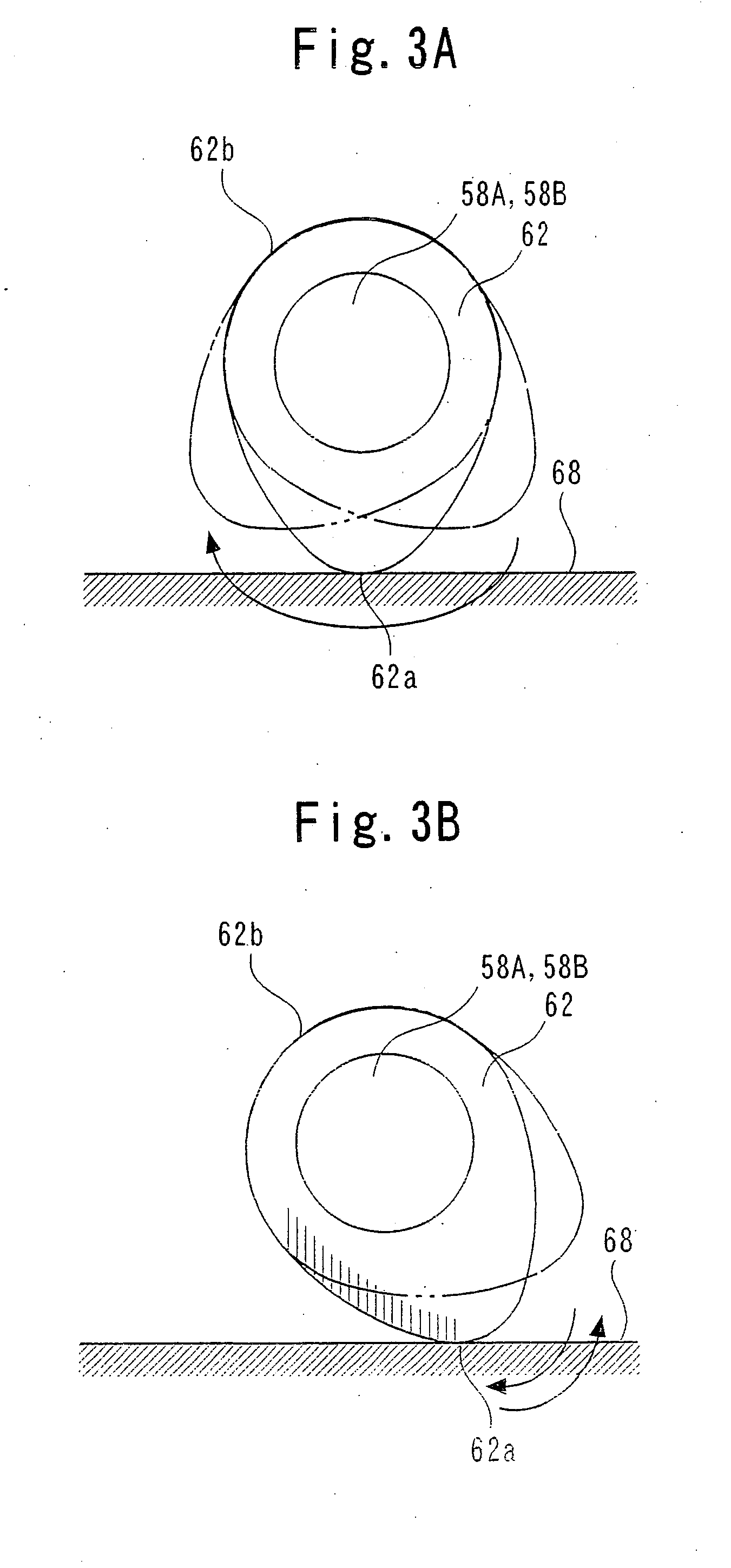Valve Gear of Internal Combustion Engine
a technology of internal combustion engine and valve gear, which is applied in the direction of non-mechanical valves, machines/engines, electrical control, etc., can solve the problems of deteriorating driveability, changing the rotary torque, and affecting the operation of the internal combustion engine, so as to achieve the effect of leveling the torqu
- Summary
- Abstract
- Description
- Claims
- Application Information
AI Technical Summary
Benefits of technology
Problems solved by technology
Method used
Image
Examples
first embodiment
[0048]FIG. 1 is a schematic diagram illustrating the configuration of a system that includes a valve train for an internal combustion engine according to the preferred embodiments of the present invention. An internal combustion engine 10 communicates with an intake path 12 and an exhaust path 14. The intake path 12 is provided with an air filter 16, which is positioned at an upstream end. The air filter 16 includes an intake air temperature sensor 18, which detects intake air temperature THA (i.e., outside air temperature). The exhaust path 14 is provided with an exhaust purification catalyst 32.
[0049]An air flow meter 20 is positioned downstream of the air filter 16. A throttle valve 22 is positioned downstream of the air flow meter 20. A throttle sensor 24 and an idle switch 26 are positioned near the throttle valve 22. The throttle sensor 24 detects the throttle opening TA. The idle switch 26 turns on when the throttle valve 22 is fully closed. A surge tank 28 is positioned down...
second embodiment
[0083]A second embodiment of the present invention will now be described. The second embodiment is such that the present invention is applied to a six-cylinder internal combustion engine 10. FIG. 7 is a schematic diagram illustrating the configuration of a section around valve trains 48, 50 according to the second embodiment. It mainly illustrates the configuration of a section around a cylinder head. The internal combustion engine 10 according to the present embodiment is a V-type six-cylinder engine. Cylinders #1, #3, and #5 are positioned in a bank 70, and the remaining three cylinders (cylinders #2, #4, and #6) are positioned in another bank 72.
[0084]The banks 70, 72 both include a valve train 48 that drives intake valves 36, and a valve train 50 that drives exhaust valves 38. Here, although the configuration of the valve train 48 is mainly described, the valve train 50 has basically the same configuration as the valve train 48. Here it is assumed that each cylinder of the inter...
third embodiment
[0107]A third embodiment of the present invention will now be described. The third embodiment is such that the present invention is applied to an eight-cylinder internal combustion engine 10. FIG. 10 is a schematic diagram illustrating the configuration of a section around valve trains 48, 50 according to the third embodiment. It mainly illustrates the configuration of a section around a cylinder head. The internal combustion engine 10 according to the present embodiment is a V-type eight-cylinder engine. Cylinders #2, #4, #6 and #8 are positioned in a bank 80, and the remaining four cylinders (cylinders #1, #3, #5 and #7) are positioned in another bank 82.
[0108]The banks 80, 82 both include a valve train 48 that drives intake valves 36, and a valve train 50 that drives exhaust valves 38. Here, although the configuration of the valve train 48 is mainly described, the valve train 50 has basically the same configuration as the valve train 48. Here it is assumed that each cylinder of t...
PUM
 Login to View More
Login to View More Abstract
Description
Claims
Application Information
 Login to View More
Login to View More - R&D
- Intellectual Property
- Life Sciences
- Materials
- Tech Scout
- Unparalleled Data Quality
- Higher Quality Content
- 60% Fewer Hallucinations
Browse by: Latest US Patents, China's latest patents, Technical Efficacy Thesaurus, Application Domain, Technology Topic, Popular Technical Reports.
© 2025 PatSnap. All rights reserved.Legal|Privacy policy|Modern Slavery Act Transparency Statement|Sitemap|About US| Contact US: help@patsnap.com



